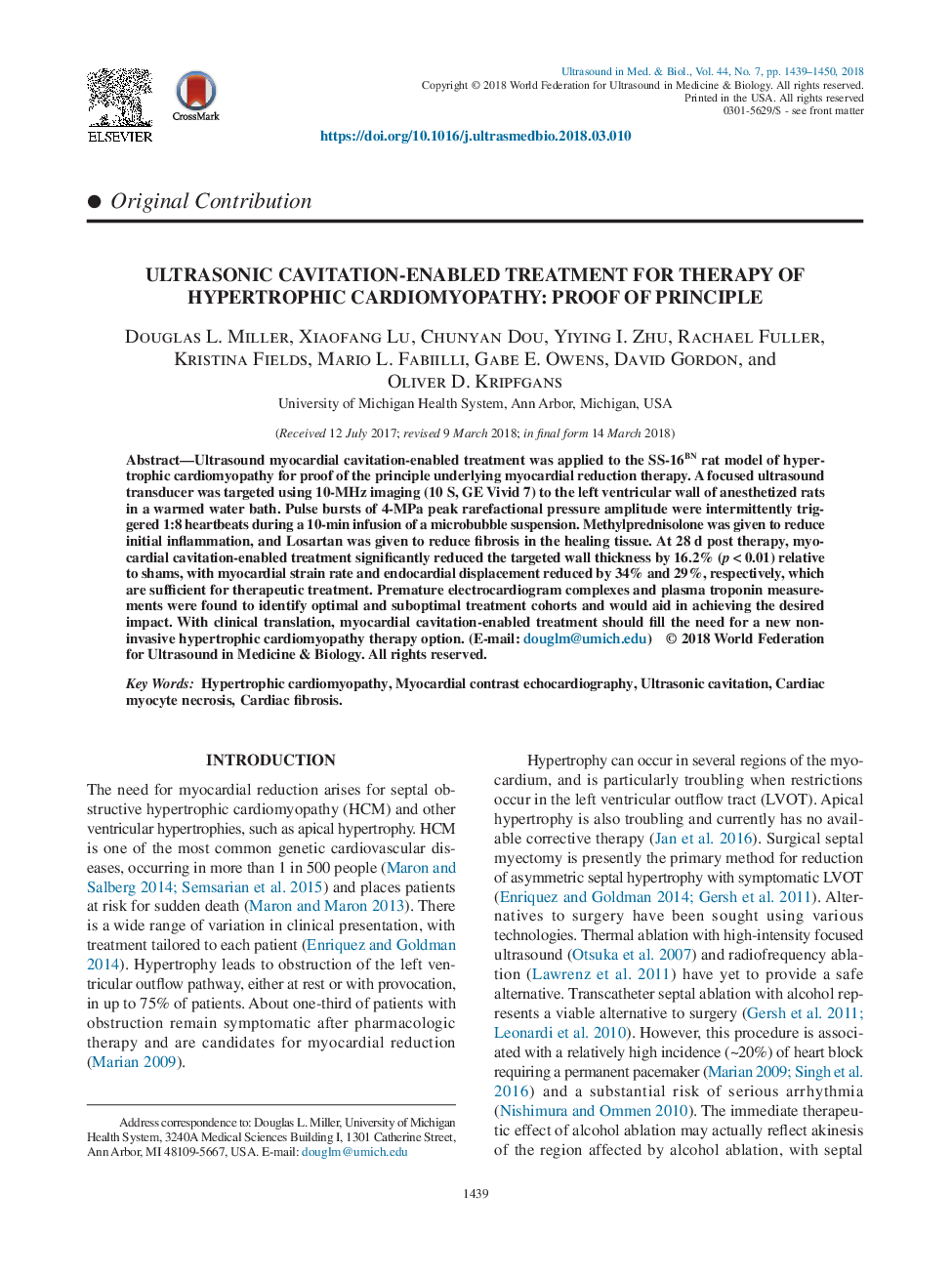| Article ID | Journal | Published Year | Pages | File Type |
|---|---|---|---|---|
| 8130992 | Ultrasound in Medicine & Biology | 2018 | 12 Pages |
Abstract
Ultrasound myocardial cavitation-enabled treatment was applied to the SS-16BN rat model of hypertrophic cardiomyopathy for proof of the principle underlying myocardial reduction therapy. A focused ultrasound transducer was targeted using 10-MHz imaging (10 S, GE Vivid 7) to the left ventricular wall of anesthetized rats in a warmed water bath. Pulse bursts of 4-MPa peak rarefactional pressure amplitude were intermittently triggered 1:8 heartbeats during a 10-min infusion of a microbubble suspension. Methylprednisolone was given to reduce initial inflammation, and Losartan was given to reduce fibrosis in the healing tissue. At 28 d post therapy, myocardial cavitation-enabled treatment significantly reduced the targeted wall thickness by 16.2% (pâ<0.01) relative to shams, with myocardial strain rate and endocardial displacement reduced by 34% and 29%, respectively, which are sufficient for therapeutic treatment. Premature electrocardiogram complexes and plasma troponin measurements were found to identify optimal and suboptimal treatment cohorts and would aid in achieving the desired impact. With clinical translation, myocardial cavitation-enabled treatment should fill the need for a new non-invasive hypertrophic cardiomyopathy therapy option.
Keywords
Related Topics
Physical Sciences and Engineering
Physics and Astronomy
Acoustics and Ultrasonics
Authors
Douglas L. Miller, Xiaofang Lu, Chunyan Dou, Yiying I. Zhu, Rachael Fuller, Kristina Fields, Mario L. Fabiilli, Gabe E. Owens, David Gordon, Oliver D. Kripfgans,
